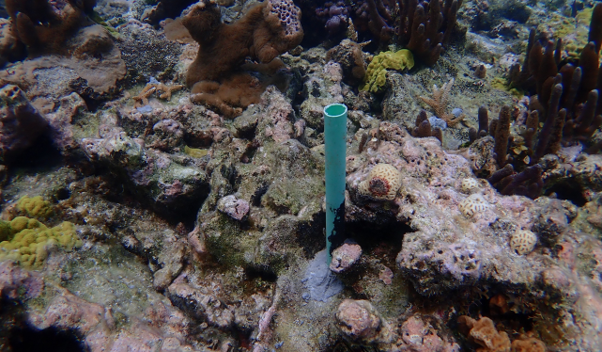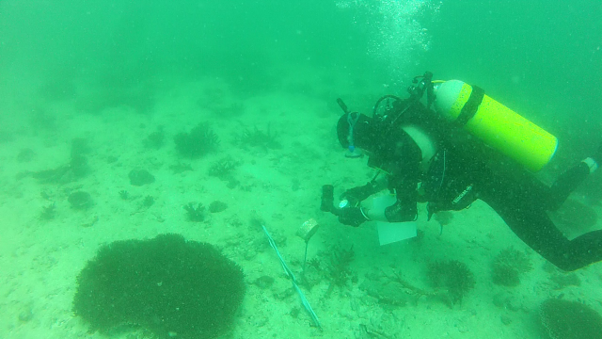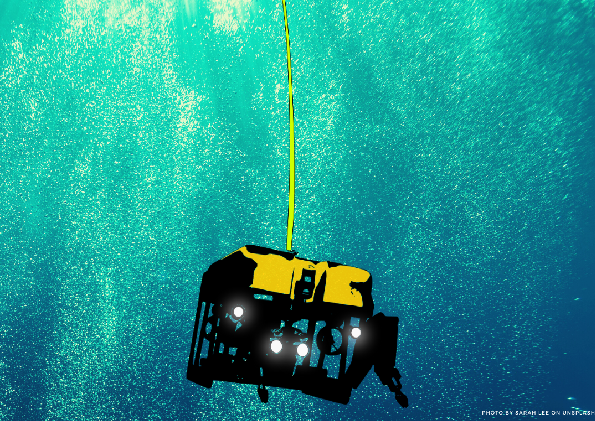Reading time: 5 min
For what kind of applications it is useful to know underwater coordinates?
Underwater positioning is a common problem for people whose jobs revolve around coastal tourism (commercial diving), fishing, research, oceanography, underwater archeology, or, as in the case of Phanor Montoya Director of Corales de Paz, the restoration and monitoring of coral reefs. Other applications of these technologies can be found in defense and security, rescue, and port inspection. But this time, we will dig into the usefulness of these tools for the restoration and monitoring of coral reefs.
In reef conservation and restoration work, underwater positioning technologies can help to re-visit a specific area to monitor it periodically. Furthermore, it allows determining the route or trajectory of a person in a sampling day, to identify a point where a photograph of a deteriorated area was taken or to identify the specific location where a coral was transplanted.
The abovementioned situations may sound alien to someone who scuba recreationally. But for those who have been part of the monitoring and restoration activities led by Corales de Paz, they will know that at those times it would be ideal to have an “underwater GPS”. Before highlighting the benefits of underwater positioning technology in this application, it is important to clarify what the coral restoration processes consist of.
What is coral reef restoration?
Coral reef restoration seeks to recover a reef to a previous condition, which means a larger reef size, quantity and variety of species, and to achieve this, two important stages are carried out:
- Corals are grown in nurseries
- They are transplanted to a deteriorated area defined in advance
How are the two stages of the restoration process carried out?
Corals grown in nurseries are often taken from donor colonies, that is, naturally healthy and abundant reefs close to the area to be restored. These donor colonies must be located with their geographic coordinates (georeferenced) to know the specific point from where the coral was taken to then being located in the nursery.
Once in the nursery, the coral undergoes a growth period before being transplanted to the selected restoration area. One of the ways to perform the transplant is by attaching the corals to the reef using a mixture of cement and PVC pipes, as seen in the figure below.

… Can you imagine having to return to an area where you dived and try to locate this element only with a photographic memory? …
This is why the restoration stage, and the others mentioned above, require georeferencing information. It allows divers to periodically return to the points of interest to assess the state and health of the ecosystem of the donor colonies and transplanted areas.
How they currently do it?
At present, these georeferencing tasks are, in many cases, done manually, depending on the experience of both the diver and the captain of the boat to locate the places of interest. Sometimes, a GPS is used, but it only locates them in a place on the surface where divers must immerse. Once underwater, the air countdown begins, at the same time as the search for the marks left in previous dives, which can be hampered by the low visibility of the water, as seen in the photograph below.

It is at this point, where the use of technology to geo-reference underwater is relevant, facilitating the conservation and restoration of coral reefs.
And you, have you had any of these experiences? Contact us and tell us what challenges you have faced that can be addressed from technological innovation.
Our philosophy is to strive to transmit and share our knowledge in a transparent and friendly language, for anyone independent of their background, and we hope that with the blog we can transmit a little of what we know
DeepCo team




